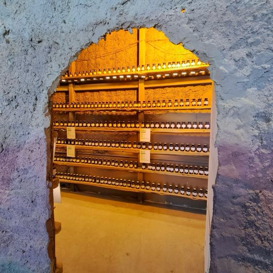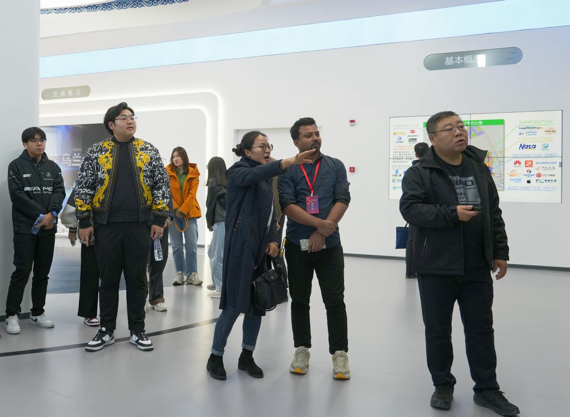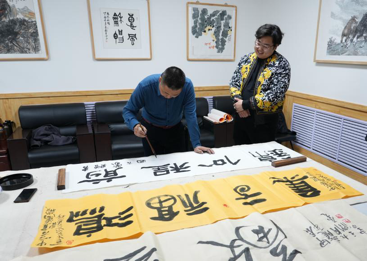Intl delegation explores Inner Mongolia's ecological technology, digital development

As the "International Insights into China" event progressed on Oct 15, the delegation embarked on its second-day itinerary in Hohhot and Ulaanqab, North China's Inner Mongolia autonomous region, to learn about local achievements in ecological technology and digital development.
They visited M-Grass Ecology and Environment (Group) Co in Hohhot and "Prairie Cloud Valley" in Ulaanqab.

The delegation visits the M-Grass Ecology and Environment (Group) Co in Hohhot on Oct 15. [Photo/chinadaily.com.cn]
The delegation visited the Inner Mongolia Branch of the National Forest and Grass Germplasm Resource Bank at M-Grass. This resource bank is a crucial ecological conservation base in China, housing 2,200 types of germplasm resources, 60,000 samples, 150,000 plant specimens, and 1.5 million soil samples.
In the M-Grass exhibition hall, the delegation engaged with a rich display of images and videos about ecological restoration efforts in grasslands, deserts, and mining areas. They witnessed how M-Grass has advanced techniques in environmental protection along the Yellow River basin, sponge city construction, and green space restoration.

The delegation visits the Huawei Cloud Data Center in Ulaanqab on Oct 15. [Photo/chinadaily.com.cn]
The delegation traveled to the Huawei Cloud Data Center in Ulaanqab, also known as the "Prairie Cloud Valley", and a major hub of China's digital economy. They explored the Ulaanqab's achievements and future outlook in big data development.
This core city of Inner Mongolia's big data industry has been advancing the application of big data technologies since 2013. In 2021, Ulaanqab was approved as a national hub node for the Integrated Computing Power Network. Since then, it has seized opportunities presented by the rapid growth of AI models, optimizing its computing infrastructure and promoting integrated computing applications.
Through developing "Prairie Cloud Valley", the city has been transforming green computing power into productivity, becoming a key engine for digital innovation in China.
The Ulaanqab City Art Museum also invited the delegation to an exhibition to appreciate exquisite calligraphy, paintings, and photography. Members interacted with local artists and tried Chinese calligraphy themselves, deepening their understanding of China's cultural heritage.

The delegation members learn and experience writing Chinese calligraphy at the museum on Oct 15. [Photo/chinadaily.com.cn]
The "International Insights into China" event was guided by the Cyberspace Administration of China's network communication bureau, and co-hosted by the Cyberspace Administration of Inner Mongolia Autonomous Region, the Cyberspace Administration of Shanxi Province, and the China Daily Website.











.png)
.png)
.png)





